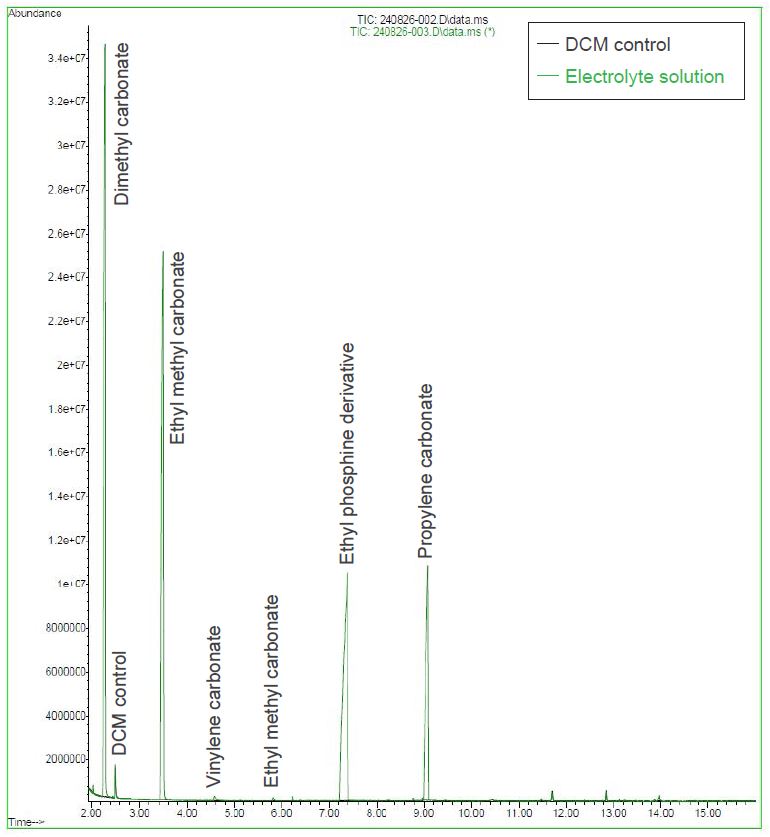Analysis of Rechargeable Lithium-Ion Battery Electrolyte by GC-MS
Home » Analysis of Rechargeable Lithium-Ion Battery Electrolyte by GC-MS
The GC-MS method offers a simple, reliable, and accurate approach for analyzing the composition of lithium-ion battery electrolytes and ensuring quality control.
Currently, methods and literature on determining electrolyte composition are limited. The aim of this study is to develop a simple and efficient gas chromatography-mass spectrometry (GC-MS) detection method for the sensitive and rapid determination of the composition and content of lithium-ion battery electrolytes.
The electrolyte in a lithium-ion battery serves as the medium that transports positive lithium ions between the cathode and anode. It is typically composed of lithium salts dissolved in organic solvents. To allow the free movement of lithium ions, the electrolyte solution must have a high dielectric constant and low viscosity. As a result, effective electrolyte solutions are usually a blend of cyclic and linear carbonate esters, with the precise composition being crucial for the battery’s overall performance.
Download the application note to learn more.

Would you like to learn more about battery materials analysis?
Contact us today for your battery materials analysis needs. Please complete the form below to have an EAG expert contact you.